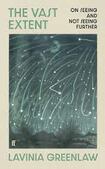
“I have grown up with an empty frame — the picture emptied of divine presences — and what is left is light.” So says poet Lavinia Greenlaw in her perceptive and wide-ranging collection of essays on the nature of vision, light and image. A poet raised among scientists, Greenlaw demonstrates a restless curiosity, touching upon topics as seemingly disparate as astronomy, meteorology, astrophysics, the colour spectrum, mythology and visual art.
The latter provides her with her most frequently used lens through which to study our engagement with the world. In “Becoming, resistance, dissolve”, the male and female painterly gazes are contrasted through images of Lucretia in works by Lucas Cranach the Elder and by Artemisia Gentileschi, who had herself experienced rape. In Cranach’s painting, Lucretia’s “… face is empty. She is already absent. She has unbecome” whereas in Gentileschi’s, the bloodlessness of the image — in comparison to the artist’s other works — suggests “This is such an old story that there is no more blood to spill. These ambiguities and refusals are a form of resistance.”
Methods of discovery are central to the writer’s work, with essays exploring points of intersection between the arts and sciences. Here we see Greenlaw bristle at the idea that poets are less clear-eyed than their scientific counterparts. In fact, she identifies a strain of romanticism in the world of science that she finds frustrating. A lively exchange of letters with the late immunologist and poet Miroslav Holub animates her arguments, with the latter admiring her coining of a phrase: “I like your ‘palliative use of science’. It ranges from scientific mimicry used by modern shamans to newspaper statements on another cure for tumours.”
The form of these “exploded” essays is loose-limbed and allusive, with the organising principles of essays with titles as diffuse as “Becoming, resistance, dissolve” and “Boredom, repetition, fixatives” sometimes a little difficult to discern. Greenlaw’s approach does, however, allow for a true reflection of the sheer volume (or vast extent) or the work that’s gone into these essays — there is a life’s worth of reflection here and a rare pleasure to be had in discovering connections in the writer’s thinking, gathered sometimes decades apart. A rewarding and thought-provoking read.









